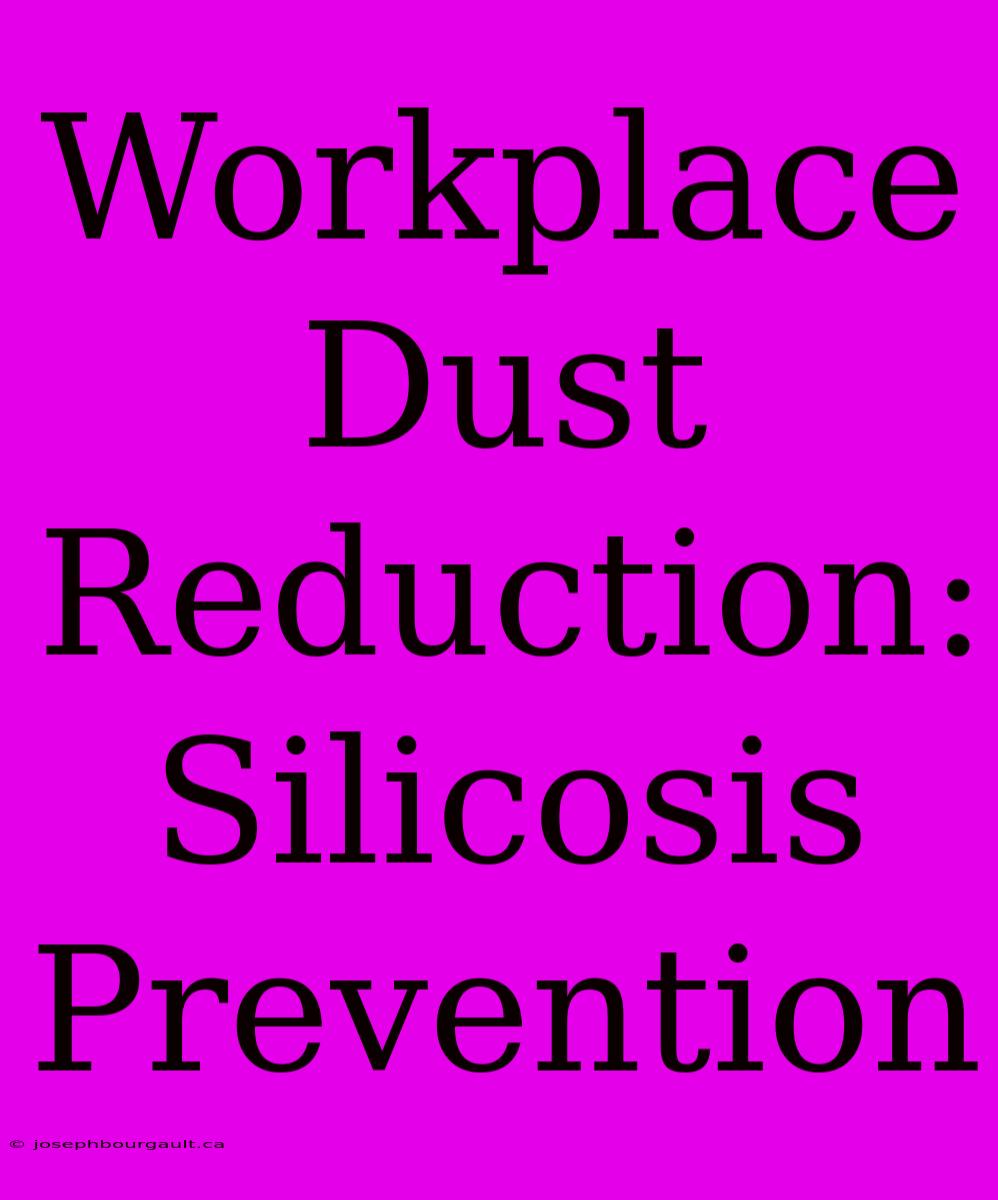Workplace Dust Reduction: Silicosis Prevention
Silicosis is a serious and potentially fatal lung disease caused by inhaling crystalline silica dust. This dust is commonly found in various industries, including construction, mining, quarrying, manufacturing, and sandblasting. If you work in any of these industries, it's crucial to understand the risks of silicosis and take necessary steps to prevent it.
What is Silicosis?
Silicosis occurs when tiny particles of silica dust get trapped in the lungs. The body's immune system tries to fight off the dust, but this process causes inflammation and scarring in the lungs. Over time, the scarring gets worse, making it difficult to breathe. Silicosis is irreversible, meaning that the damage to the lungs cannot be reversed.
Symptoms of Silicosis
Symptoms of silicosis may not appear for several years after exposure to silica dust. However, once symptoms do appear, they can be severe and debilitating. Some common symptoms include:
- Shortness of breath
- Cough
- Chest pain
- Wheezing
- Fatigue
- Weight loss
- Finger clubbing (swelling at the tips of the fingers)
Preventing Silicosis Through Dust Reduction
The best way to prevent silicosis is to reduce exposure to silica dust. Here are some effective strategies:
1. Engineering Controls
- Enclosure: Enclose processes that generate dust, such as sandblasting, using a booth or other containment device.
- Ventilation: Install and maintain effective ventilation systems to remove dust from the air.
- Water Suppression: Use water to suppress dust during excavation, drilling, and other activities.
- Wet Cutting: Cut materials using water-cooled saws or other methods that minimize dust generation.
2. Administrative Controls
- Work Practices: Train workers on proper work practices to minimize dust exposure, such as using wet methods, wearing personal protective equipment (PPE), and keeping work areas clean.
- Job Rotation: Rotate workers among different tasks to reduce cumulative exposure to silica dust.
- Scheduled Breaks: Provide workers with scheduled breaks away from dusty areas to minimize exposure.
3. Personal Protective Equipment (PPE)
- Respirators: Workers should wear NIOSH-approved respirators that are appropriate for the type and concentration of silica dust present.
- Protective Clothing: Wear dust-resistant clothing, such as coveralls, gloves, and eye protection, to minimize skin and eye contact with dust.
Monitoring and Management
Regularly monitoring workplace dust levels and providing medical surveillance for workers exposed to silica dust is crucial. This includes:
- Dust Sampling: Monitor air quality to measure silica dust levels in the workplace.
- Medical Surveillance: Provide workers with regular medical examinations to identify early signs of silicosis.
- Employee Training: Regularly train workers about silicosis, its risks, and preventive measures.
Conclusion
Silicosis is a preventable disease. By implementing effective dust control measures, monitoring workplace dust levels, and providing medical surveillance, employers can significantly reduce the risk of their workers developing silicosis. If you work in an industry where silica dust is present, it's important to be aware of the risks and take steps to protect yourself.

